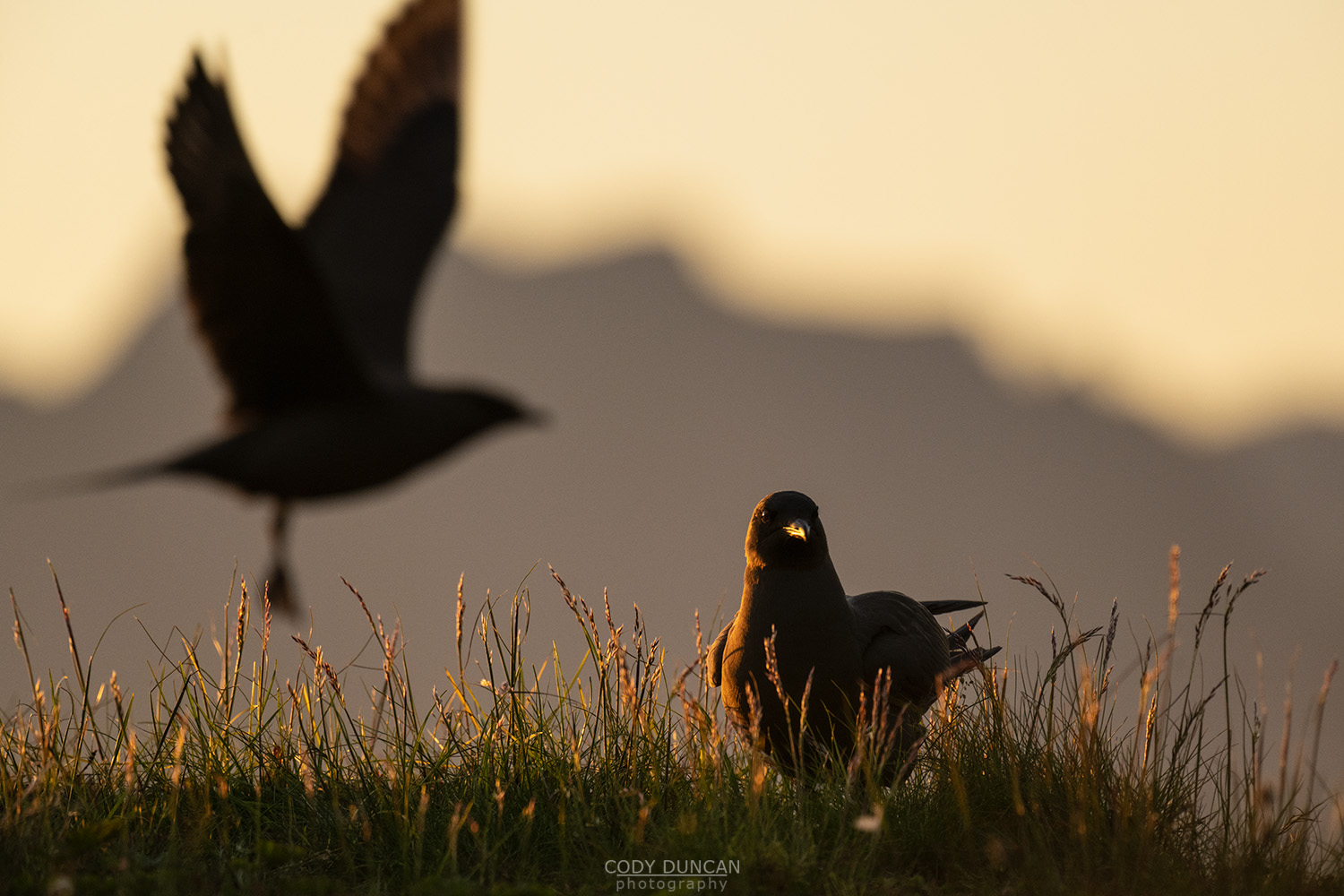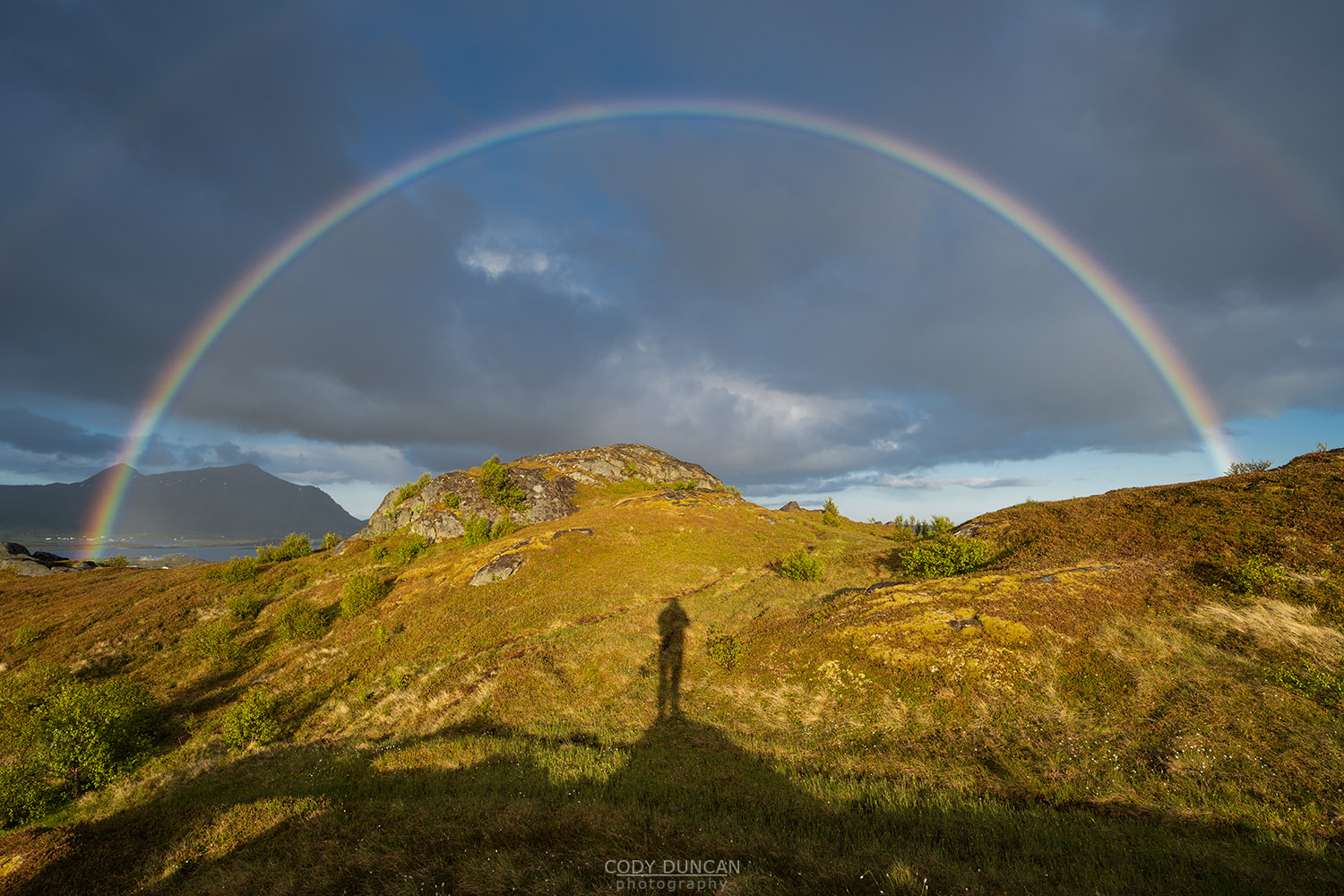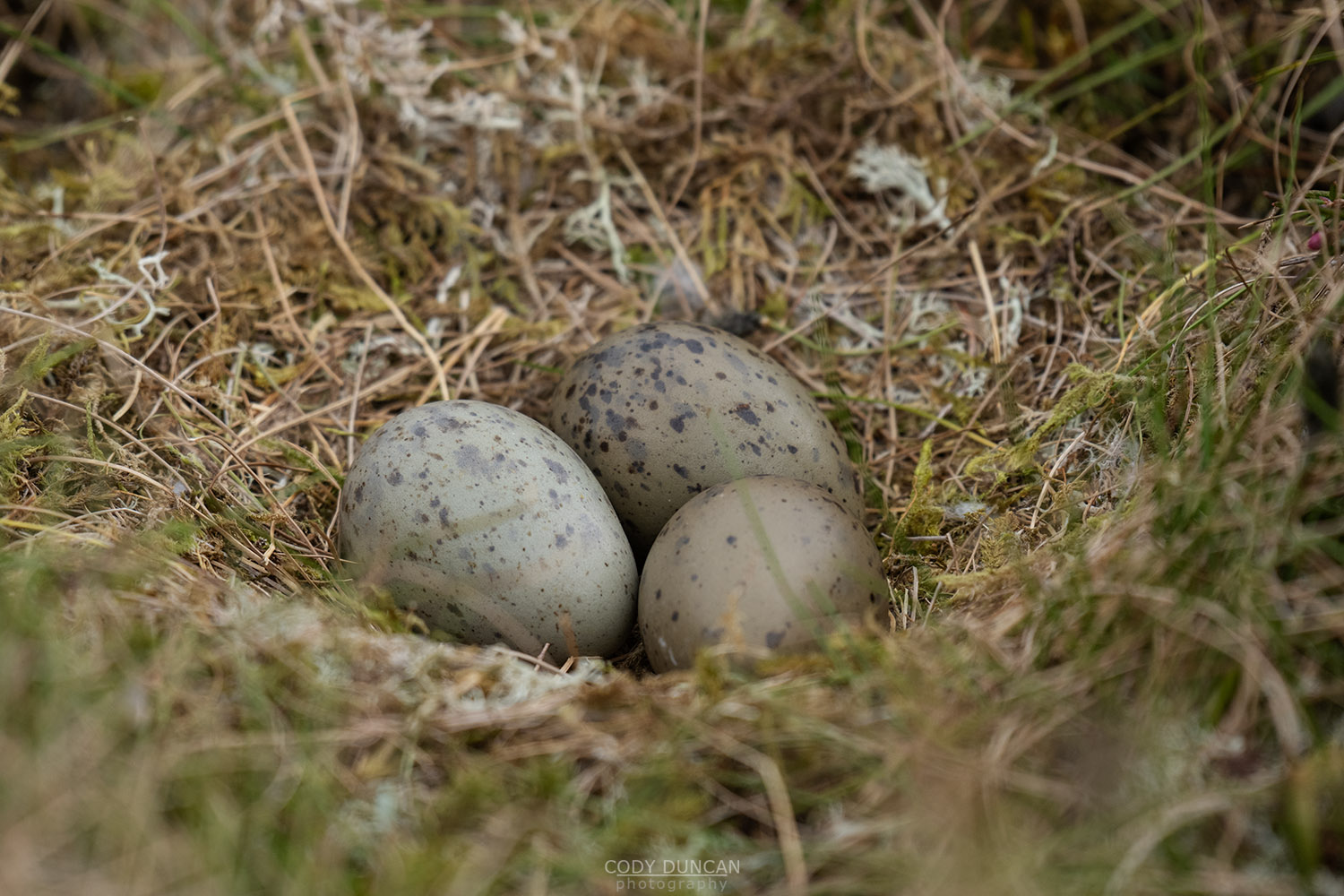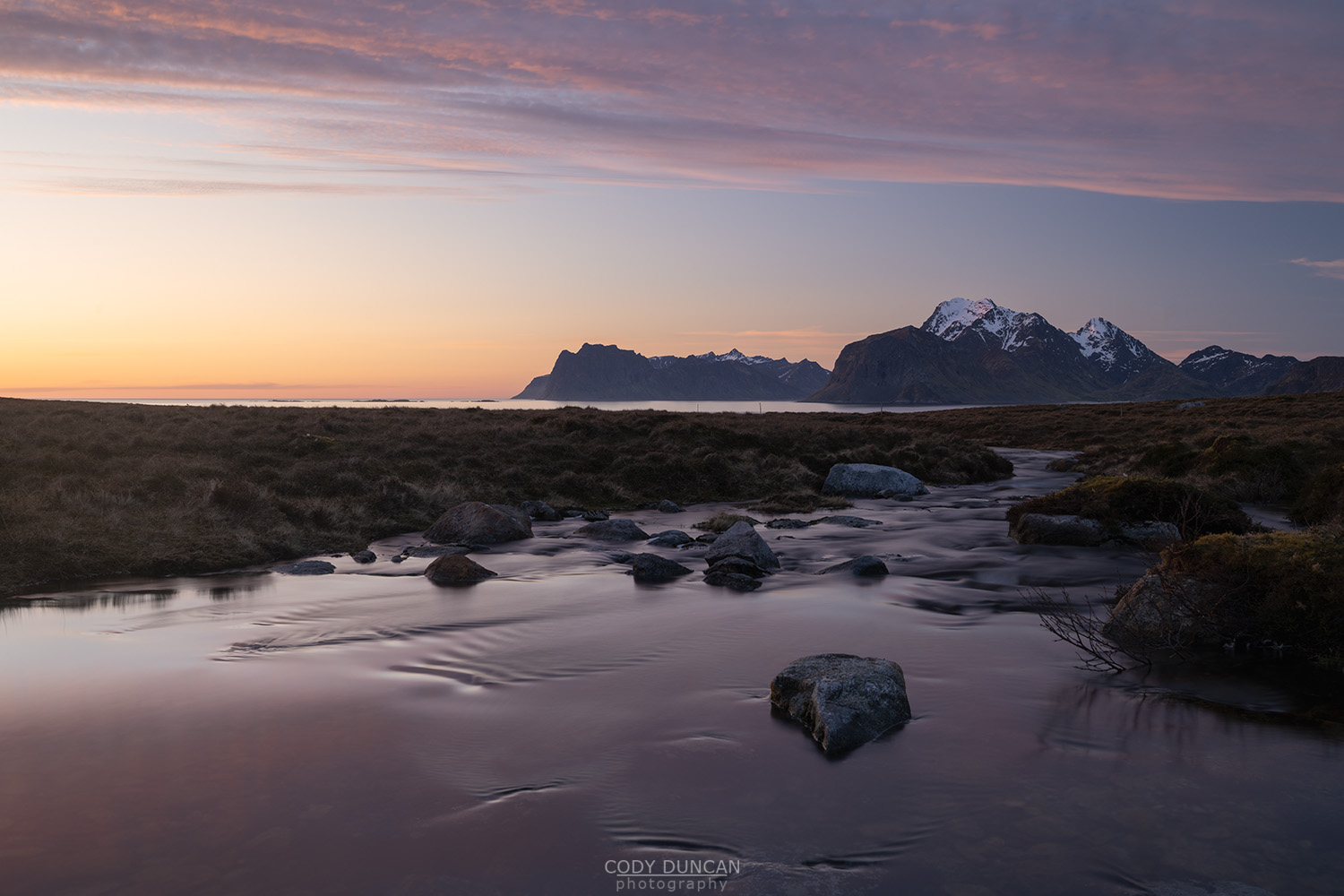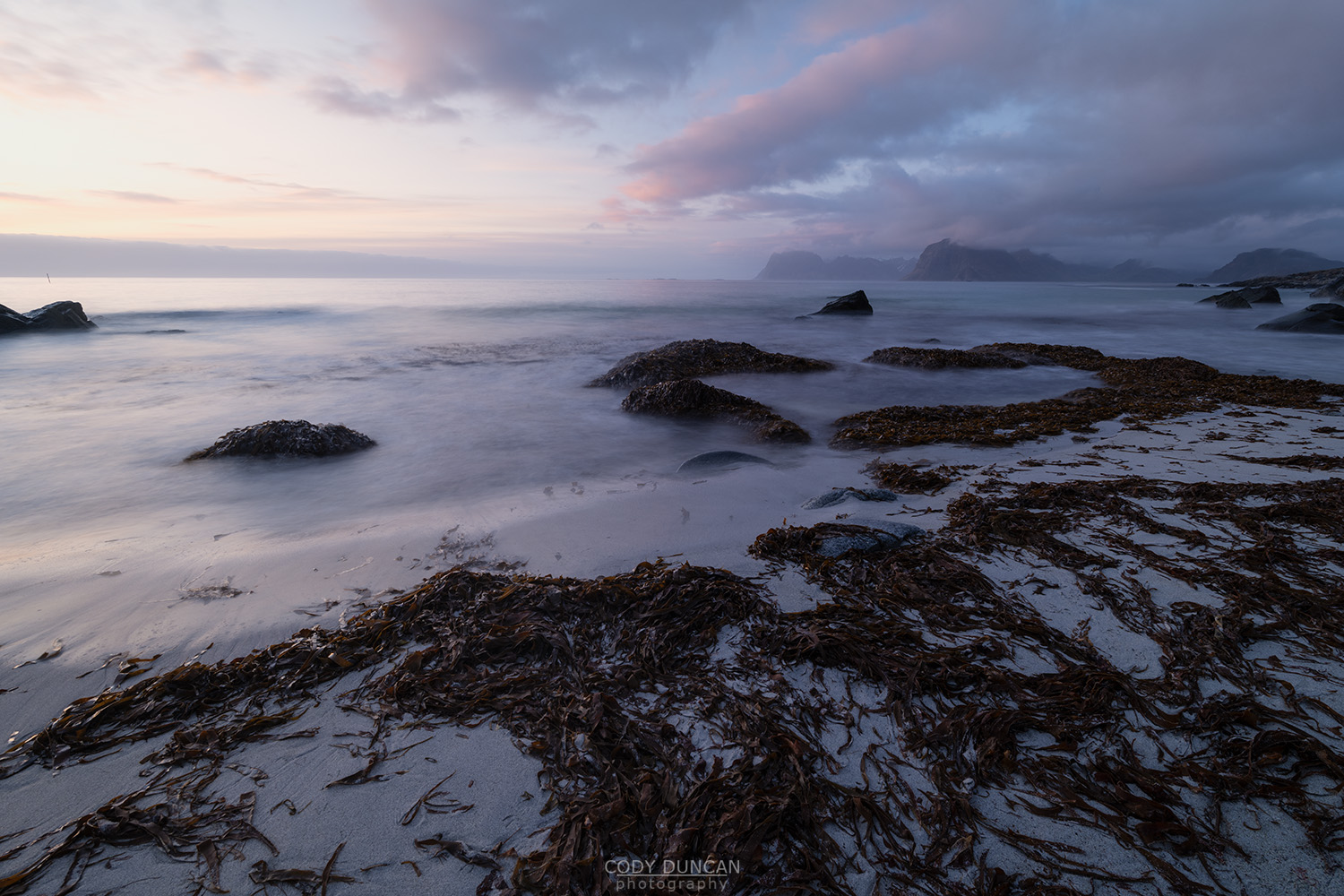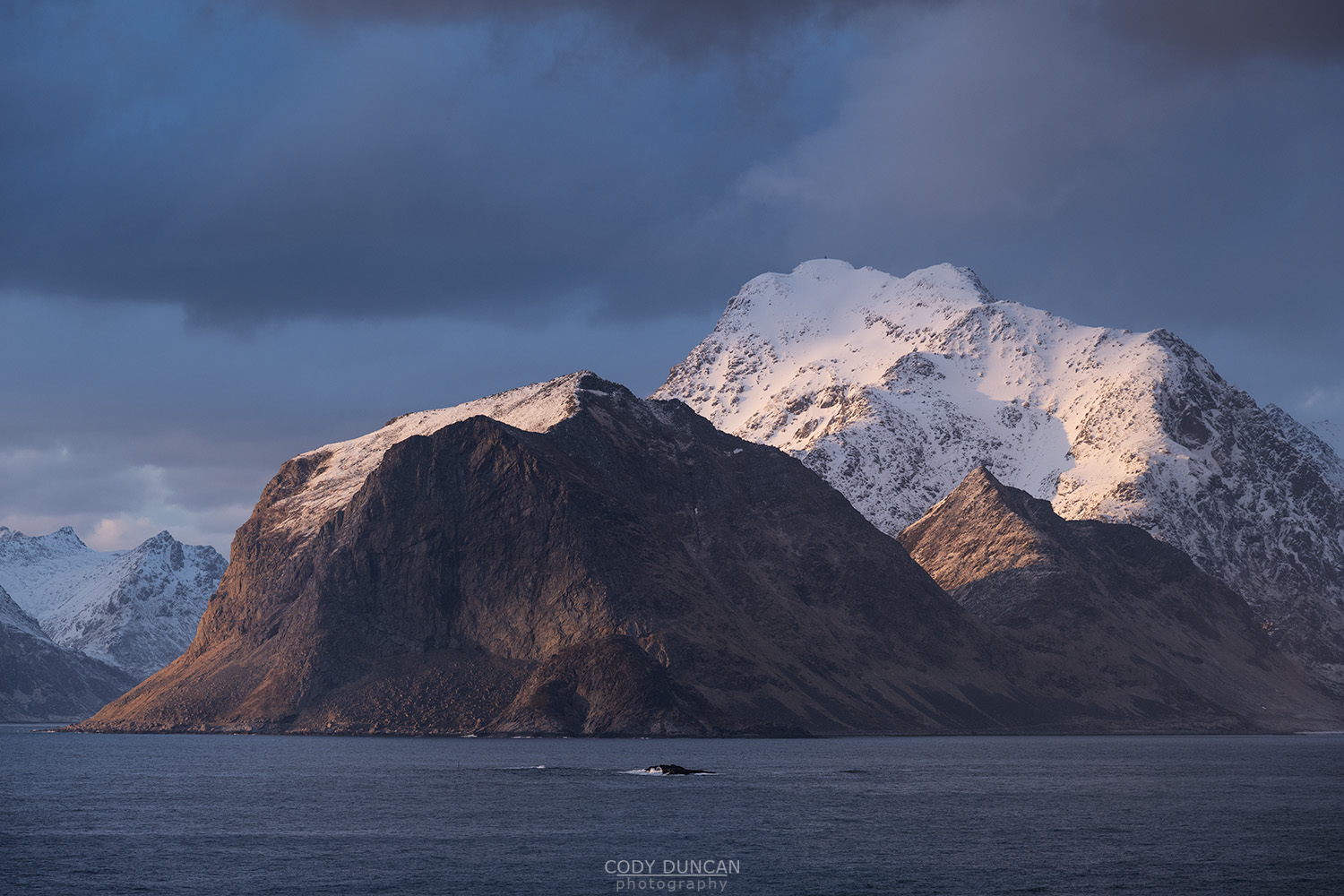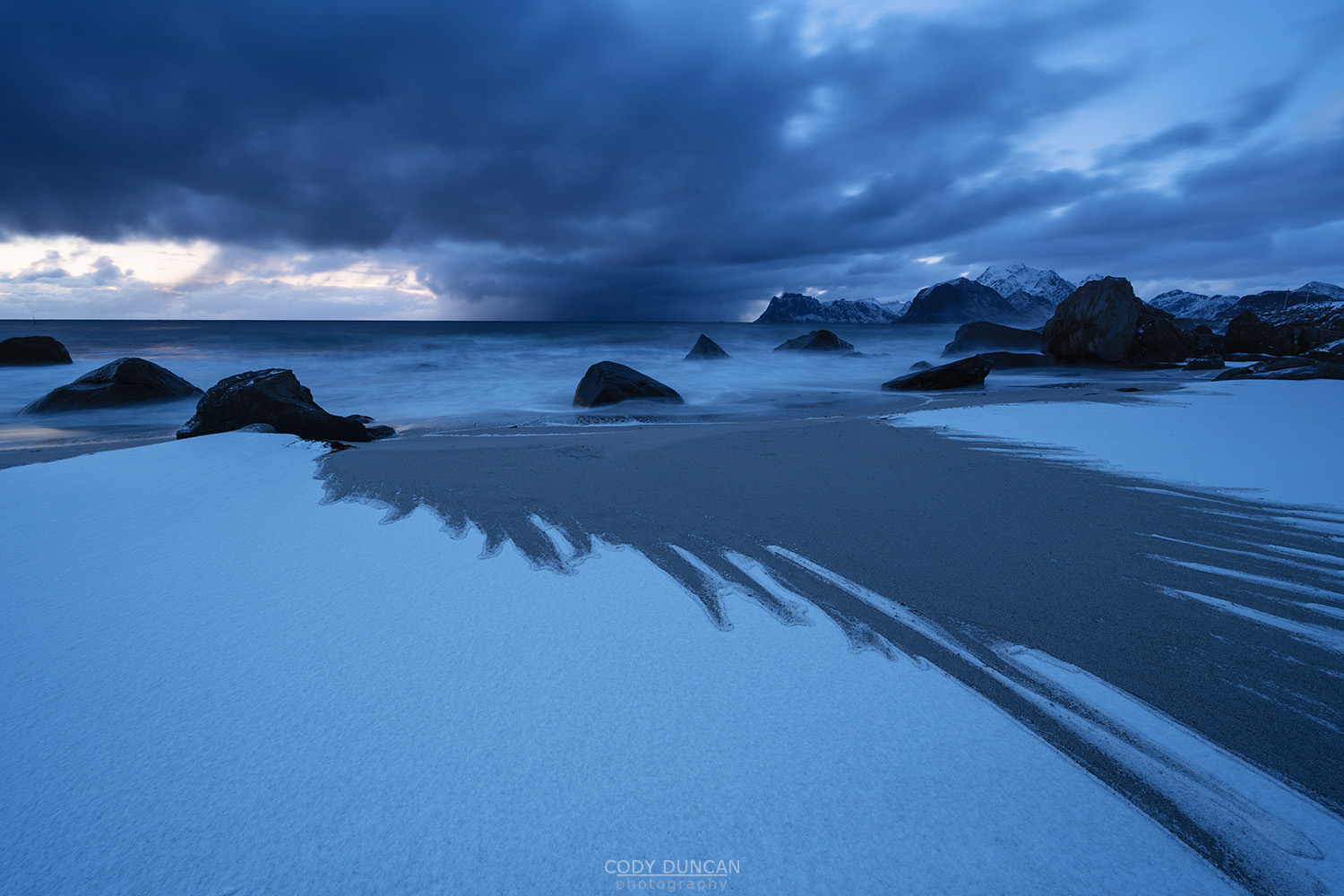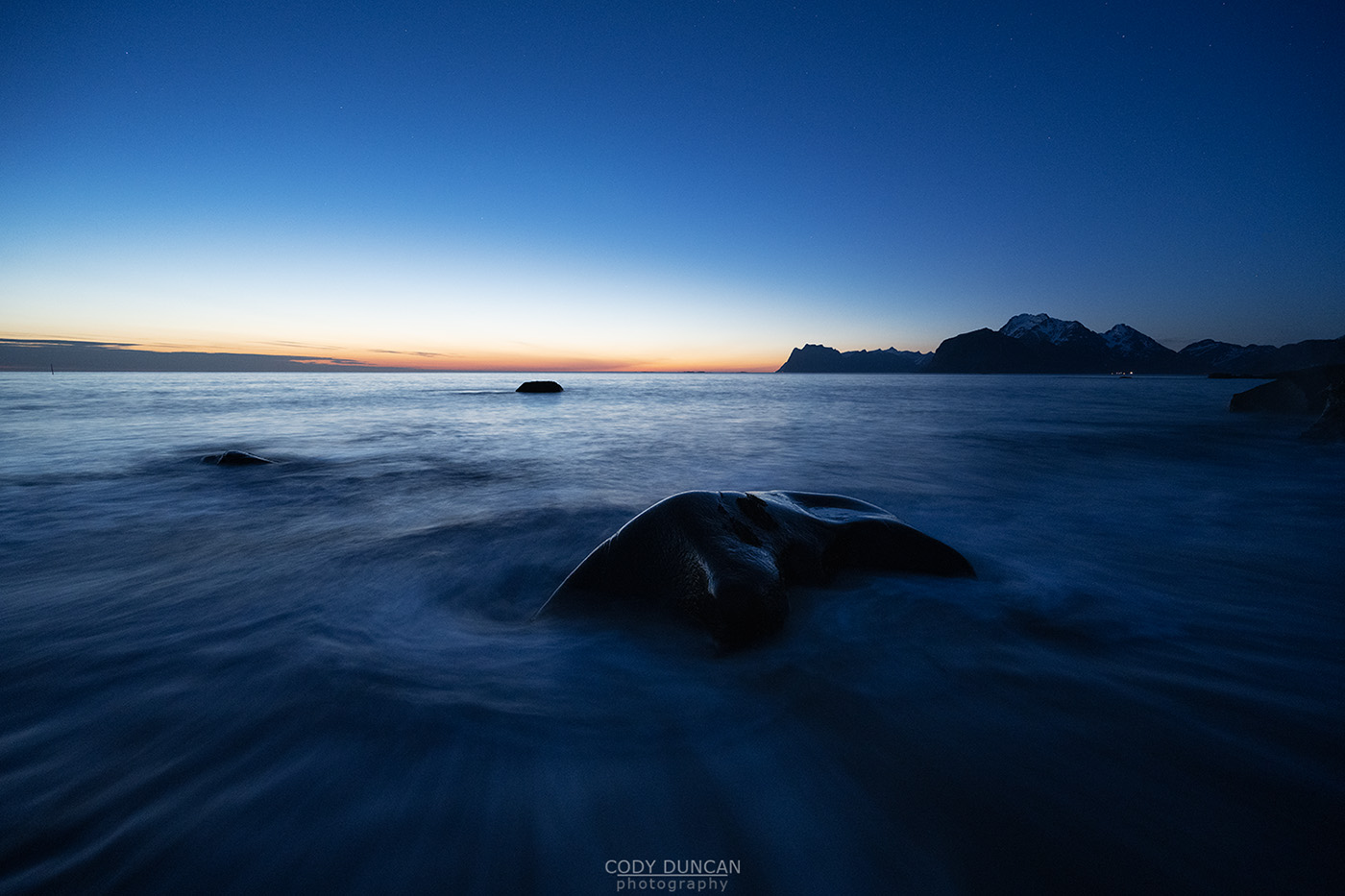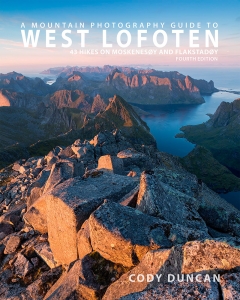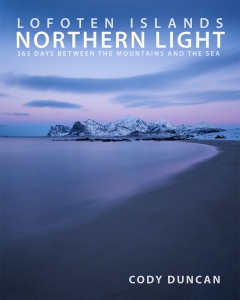Photo: Midnight sun over Kvalvika beach, Lofotodden national park, Moskenesøy, Lofoten Islands, Norway. May 31, 2022. 00:02
After what has been a cold and wet spring this year, the last week has brought the arrival of the midnight sun and full summer weather! The weather here can often be just like switching on a light, it changes that fast. And luckily, once it changed for the better, it has lasted the better part of a week with t-shirt weather – even while sitting on mountain tops at midnight.
The good weather of the last week has seen me exploring some new mountain areas, as well as visiting some familiar one, such as this image of Kvalvika beach, before the summer season kicks into full gear and the popular places become a bit to busy for my liking. So it is good when I can visit them in summer like conditions still in May. And this year is feeling like it will be a busy one after two years of covid as the roads are already filled with continental camper vans and motorhomes.
The weather forecast on this evening was for clear sky, which is actually not that good for photography during the midnight sun season. And as you can see, the light is kinda ‘boring.’ With a fully clear sky there is often enough sea haze to block much of the sunlight, causing a weak and soft light to shine over the landscape, while the sky overhead remains bright blue. In winter, with snow covered mountains, this would be perfect light, but in summer, it doesn’t work as well.
As you can also see in the photo, the mountains area already backlit by the sun, so I’m only looking at the shadow side of them. If I was looking for dramatic sunset light on the mountains themselves, I would have to have been here earlier or later in the year, when the sun would be setting to the west and shining onto the mountains. Although then, the sun would not be in the image either.
On this evening, with a forecast for little to no wind, I was actually out at Kvalvika to photograph a different scene – these mountains reflecting in a small lake which is on the edge of the beach. But as I arrived out there at about 20:00 and 4 km of hiking, the beach side of the valley I hiked up and a bit of a breeze blowing in off the mountains and disturbing the lake too much for a reflection. I waited around for a while – until after midnight – hoping the wind would subside, but it never did.
Hiking back after midnight, once I got to the other side of the small mountain pass I could feel the conditions immediately calm. The (somewhat large) lakes I had to pass on my hike back to my van were perfectly still, with mirror like reflections of the surrounding landscape. So I was just a bit unlikely with the particular wind direction only affecting the Kvalvika beach area.
Head over to my Instagram account for (almost) daily postings of the local conditions here on Lofoten: @distant.north
Camera Info:
Nikon Z7 II
Nikon 14-30mm f/4
24mm
ISO 80
f 14
2 seconds
WB Daylight
6 stop ND filter
